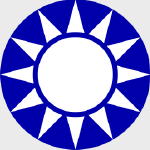Hobby Master HA5502 Chinese Air Force Curtiss P-40N Warhawk Fighter - Chiao Wu O, 29th Fighter Squadron, 5th Fighter Group, China, 1944 (1:72 Scale)
"Flying is hours and hours of boredom sprinkled with a few seconds of sheer terror."
- Greg "Pappy" Boyington
 The P-40 was the best known Curtiss-Wright designed airplane of the Second World War. It was also one of the most controversial fighters, vilified by many as being too slow, lacking in maneuverability, having too low a climbing rate, and being largely obsolescent by contemporary standards even before it went into production. The inadequacies of the P-40 were even the subject of a Congressional investigation after the War ended.
The P-40 was the best known Curtiss-Wright designed airplane of the Second World War. It was also one of the most controversial fighters, vilified by many as being too slow, lacking in maneuverability, having too low a climbing rate, and being largely obsolescent by contemporary standards even before it went into production. The inadequacies of the P-40 were even the subject of a Congressional investigation after the War ended.
While these criticisms were certainly valid, it is also true that the P-40 served its country well, especially in China and Burma, during the opening phase of the War in the Pacific when little else was available to the US Army Air Corps. Along with the P-39 Airacobra, the P-40 was the only American fighter available in quantity to confront the Japanese advance until more modern aircraft could be delivered to frontline squadrons.
The P-40N (manufactured from 1943-44) represented the final production model of the P-40. The P-40N featured a stretched rear fuselage to counter the torque of the more powerful, late-war Allison engine, and the rear deck of the cockpit behind the pilot was cut down at a moderate slant to improve rearward visibility. A great deal of work was also done to try and eliminate excess weight to improve the Warhawk's climb rate. Early N production blocks dropped a .50 in (12.7 mm) gun from each wing, bringing the total back to four; later production blocks reintroduced it after complaints from units in the field. Supplied to Commonwealth air forces as the Kittyhawk Mk IV. A total of 553 P-40Ns were acquired by the Royal Australian Air Force, making it the variant most commonly used by the RAAF. Subvariants of the P-40N ranged widely in specialization from stripped down four-gun "hot rods" that could reach the highest top speeds of any production variant of the P-40 (up to 380 mph), to overweight types with all the extras intended for fighter-bombing or even training missions. The 15,000th P-40 was an N model decorated with the markings of 28 nations that had employed any of Curtiss-Wright's various aircraft products, not just P-40s.
Pictured here is a 1:72 scale replica of a Chinese Air Force Curtiss P-40N Warhawk fighter that was piloted by Chiao Wu O, 29th Fighter Squadron, 5th Fighter Group, China, 1944.
Sold Out!
Dimensions:
Wingspan: 6-inches
Length: 5-inches
Release Date: February 2017
Historical Account: "Air Force Day" - The Republic of China Air Force (ROCAF) was formed by the Kuomintang after the establishment of the Aviation Ministry in 1920. As tensions mounted between China and Imperial Japan in the 1930s, a number of smaller Chinese warlord air force men (including Guangdong Provincial Air Force) and equipment became integrated into the ROCAF in a centralized effort to counter Imperial Japanese military ambitions.
During the Second Sino-Japanese War (1937-1945), the ROCAF participated in attacks on Japanese warships on the eastern front and along the Yangtze river and interdiction and close-air support during the Battle of Shanghai in 1937. The initially Chinese frontline fighter aircraft were mainly Curtiss Hawk IIs, Hawk IIIs and Boeing P-26Cs. These engaged Japanese fighters in many major air battles beginning on 14 August 1937, when Imperial Japanese Navy warplanes raided Chienchiao airbase; "814" has thus become known as "Air Force Day". Chinese Boeing P-26/281 fighters engaged Japanese Mitsubishi A5M fighters in the world's first dogfight between all-metal monoplane fighters. A unique mission in April 1938 saw two Chinese Martin B-10 bombers fly a mission over Japan, dropping only anti-war leaflets over the Japanese cities of Nagasaki and Saga. It was a war of attrition for the Chinese pilots, as many of their most experienced ace fighter pilots, such as Lieutenant Liu Tsui-Kang and Colonel Kao Chih-Hang, were lost. Six months into the war, which is considered the beginning of World War II in Asia, the Chinese Air Force inventory of front line American Hawk IIs and IIIss and P-26Cs were superseded by faster and better armed Polikarpov I-15s and I-16s as support from the Soviet Union grew and American support faded.









